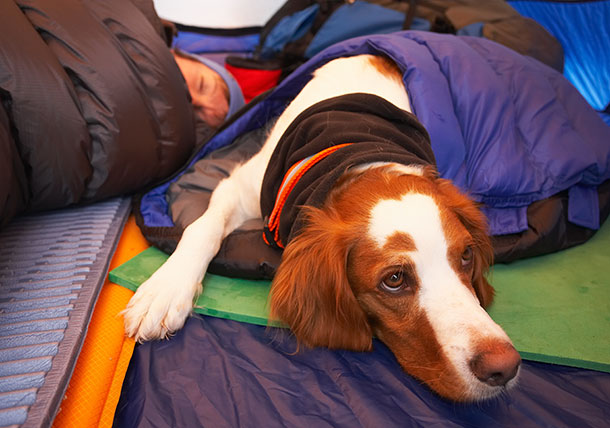Keeping Those Critters Cozy

Fluffy has a cuddle-worthy coat year-round, but is it really enough to provide wintery warmth? When those bare paws get cold and temperatures drop, pets rely on their humans to provide essentials for proper protection. It may seem like your furry family members are comfortable in their natural wooly coat while frolicking outside on a chilly day, but a lot more care is required to ensure the wintery weather won’t wear down your pets’ well-being.
Pets’ Ability to Adapt to Cold Weather Varies
A pet’s tolerance to cold is influenced by factors such as the coat’s thickness, the amount of body fat, age, overall health and how well the animal acclimates to its environment. Animals who live in warmer climates will struggle in adapting to colder locations. On average, hair coats become denser in the colder months, though the thickness varies by species and breed. In most cases, a cold weather undercoat helps provide additional warmth when daylight is shorter, such as during the fall and winter seasons. When temperatures drop to a point in which we humans need to wear a coat, we must consider that temperature low enough that our pets should have an option for housing, if not kept indoors. For example, consider getting a shed or doghouse to block some of the chill. When we find the need for scarves and gloves, our pets require more aggressive measures for warmth. Horses appreciate sheets or blankets when temperatures drop below 50 degrees Fahrenheit. This depends on the horse’s opportunity for shelter and genetic coat thickness, which varies by breed. Short-haired dogs such as terrier breeds or tiny tots like the Chihuahuas might enjoy the warmth of a doggie sweater when you feel the need to bundle up.
Pets may show they are cold when they hide under bushes and shrubs or curl up tightly in areas out of the wind. Some pets may actually shiver and hunch low, have shifting paws when the ground is too cold for contact and may even lie close to the ground to feel toasty. Housemates and herd mates may huddle together for the benefit of each other’s body heat.
Abrupt Temperature Changes Affect Pets’ Adaptability
Texas poses particular frustration for pets and pet owners when the temperature varies by 20 degrees Fahrenheit day-to-day, teasing us with spring-like warmth before a freezing night. Our Texas pets may develop a lighter, less efficient winter coat due to longer days of high temperatures as the summer heat persists into the early fall and may be less protected when a sudden cold front hits. Bedding, dog or horse blankets, an outdoor shelter and plans for providing warm, comfortable care are vital when our Texas tank tops are wrapped in warm coats at unpredictable moments through the Texas fall, winter and spring months.
It is too easy to underestimate the protection your pet has from its soft, furry coat, but prepare to comfort your animal when faced with those wintery woes. Keeping your pets warm can reduce illness just as with our two-legged kiddos. Prolonged contact with cold surfaces can lead to injury to skin and paw pads, and the freezing temperatures can harm delicate ears and noses. Add bedding from blankets, straw or shavings to outdoor resting areas to create a warm barrier from hard, cold surfaces for cozy comfort.
When preparing to keep pets comfortable in the chilly months, remember that their water dishes and supplies may freeze or be too cold to comfortably quench thirst. Provide fresh water daily, or keep an option open for preventing troughs from freezing over. Outdoor pets also may face additional needs nutritionally because cold weather boosts their caloric needs as their bodies work to defend the cold. Feeding your pet smaller, more frequent meals, particularly when outdoors, aids in warmth as digestion creates internal body heat.
As you find comfort in cuddling up indoors and around the warmth of a fire, remember that frigid weather can be unbearable for your furry friends. Let’s gather together to create a plan for keeping our companions comfortable in the colder temperatures, and let’s keep calm and snuggle up!
Jennifer Hennessey, DVM, CVJ, is a graduate of Texas A&M College of Veterinary Medicine who lives in Cypress, Texas. Dr. Hennessey practices at Animal ER of Northwest Houston, where she is the practice owner.

